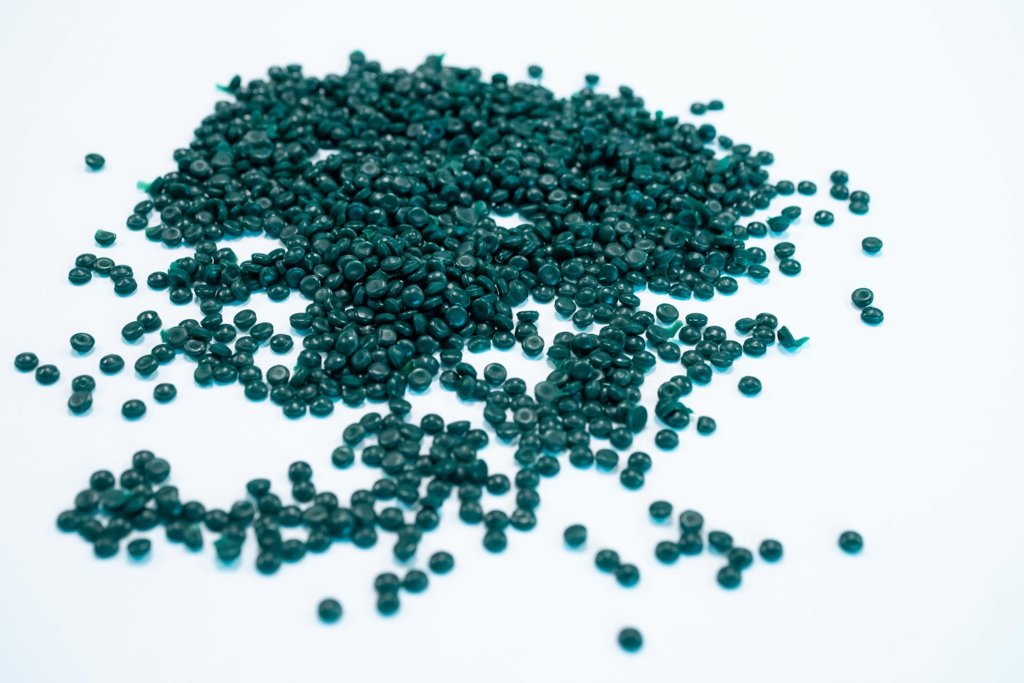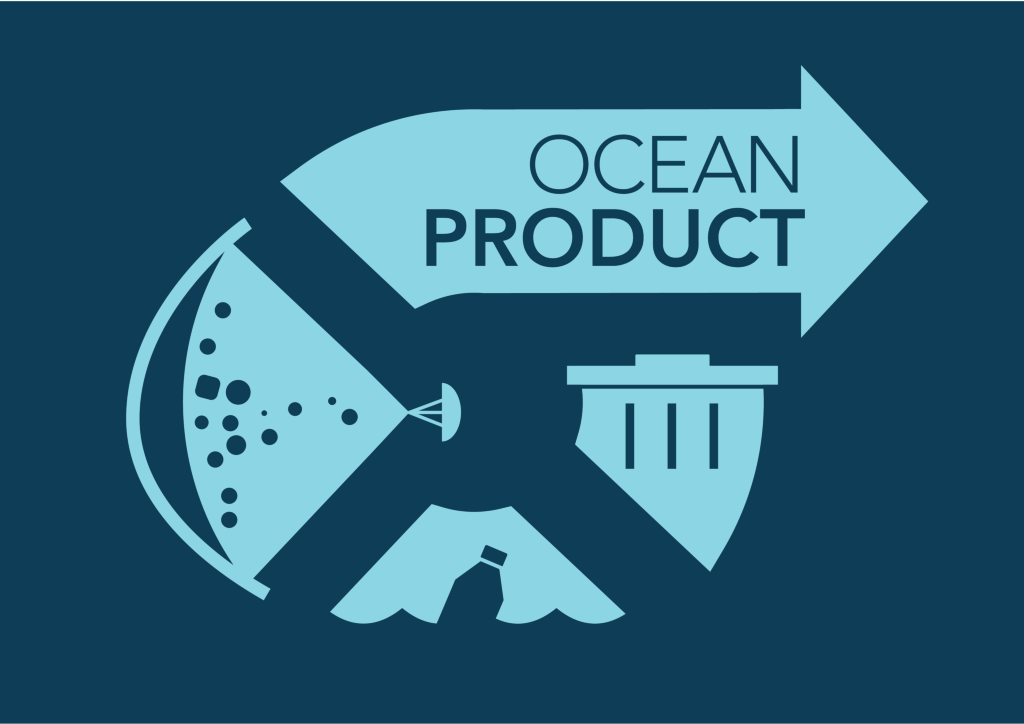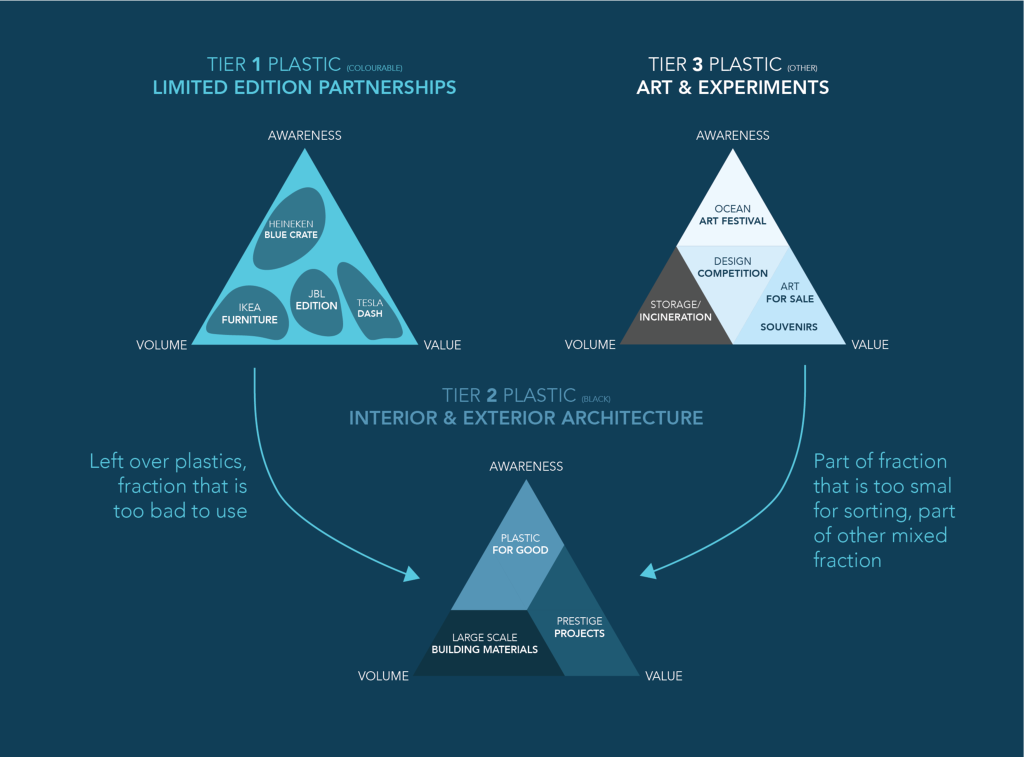The Ocean Cleanup is an NGO aiming to rid the world’s oceans of plastic by 2040. Starting this year, they will be removing plastic from the ocean at a larger scale. Collecting this plastic, however, begs the question: ‘What to do with this waste after removing it from the ocean?’ Preferably, a sustainable purpose is needed so that it can no longer pollute the environment. Furthermore, The Ocean Cleanup is fully dependent on donations. It would be ideal if the collected plastic could in some way help finance the clean up as a more stable source of income. Finally, ocean plastic is not a homogeneous material, making for quite the design challenge. The final solution groups the ocean plastic material into three material tiers, with a separate strategy for each tier.
Tier 1 plastic: (recyable/colourable)
Limited Ocean Plastic Editions
Partner with specific companies to make limited ocean plastic editions of existing products. This creates a win-win situation where consumers get a special version and the partner company benefits from the positive brand association.
Tier 2 plastic: (recyclable/non-colourable)
Interior & Exterior Architecture
Collaborate with processing companies to create building materials from ocean plastic.
Tier 3 plastic: (non-recyclable)
Arts & Experiments
This strategy allows for the extraction of as much value and awareness from the worst plastic possible by using it in things like art projects and design competitions.
The strategies fit together in a brand concept called ‘Ocean Product’. This brand ties the strategies together, while at the same time differentiating The Ocean Cleanup’s plastic from that of competitors.
In a design project, the scope is often defined by a target consumer group. In this case the only parameter that was truly defined was the material properties however, the material is not homogenous and contains many different fractions.
To reduce the complexity of the design challenge, we took multiple approaches to better define parts of the challenge. For example, based on material research, I was able to categorise the ocean plastic into three tiers. After simplifying multiple parts, the problem was reduced to something that could be solved. In this way, this graduation project serves as a case study for solving undefined and open-ended design challenges.






